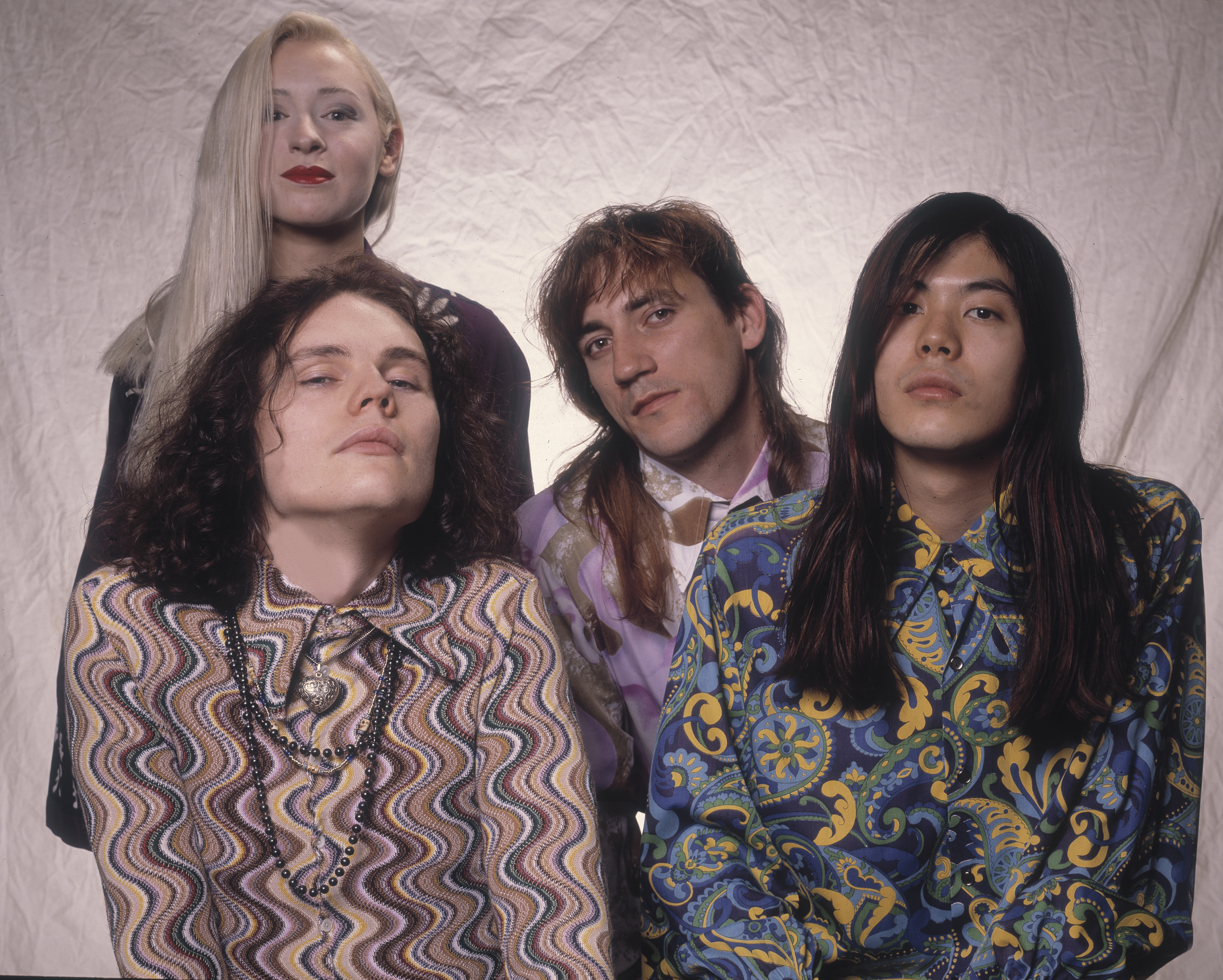This article originally appeared in the December 1991 issue of SPIN. Smashing Pumpkins were one of our Artist of the Year runner-ups. In honor of Gish turning 30, we’re republishing this article.
With its simultaneously childlike and ferocious debut album, gish (Caroline Records), the Chicago-based hard-soft psychedelia foursome Smashing Pumpkins exploded onto the 1991 indie-rock landscape with all the messy orange furor of its namesake. Even though the group disavowed any overt connections to Halloween or related vandalisms, the trick-or-treat dichotomy has proven to be a recurring theme during the Pumpkins’ short but illustrious career. Singer-guitarist-mastermind Billy Corgan, guitarist James lha, bassist D’Arcy Wretzky, and drummer Jimmy Chamberlin thrive on contradictions and surprises.
First there’s the music, which veers back and forth between huge, steely guitar constructions, not unlike Soundgarden plus Hendrix plus Zep plus Jane’s Addiction, and soft-focus moments not unlike a stoned Saturday afternoon in bed with someone you love, their cat, and some dust motes filtering through the sunbeams.
More often than not, Smashing Pumpkins combine the two approaches in one song. “Siva,” the subject of the first gish video, kicks off with a sinuous, multi-tracked riff, muscles through some reckless soloing, and tumbling stop-start accents, then segues into a whispery-bass-high-hat-peep-guitar figure while singer Corgan caresses the ears with talk of wishes and kisses sprinkled on your head. The entire cycle is repeated once, and the song finishes in a blur of jagged chording. Corgan calls this calculated tension-and-release approach “flow arranging,” and one look at the audience’s surging response in the live segments of a recent MTV profile suggests that he’s gotten it down pat.
Corgan, a guitar visionary in the late-’60s tradition, originally set out to make Hindu goth music but gradually worked back to his roots after a grueling nine-month stint in Florida with his first group, the Marked. By 1988 he’d collected lha, D’Arcy (she usually dispenses with the last name), and Chamberlin.
After a couple of compilation-LP appearances and the 1990 Sub Pop single “Tristessa,” Smashing Pumpkins’ reputation was sufficiently sealed. By the time gish was released last June, the Pumpkins’ next-big-thing status was almost a foregone conclusion. As of this writing, gish‘s sales are fast approaching the 100,000 mark.
Billy Corgan seems suitably unimpressed with himself, or at least unsure that he can bring to life the full scope of sound in his head. “If the next record is no better than this record, then we’ve failed,” Corgan told Chicago Tribune writer Greg Kot earlier this year.
If perpetual self-dissatisfaction isn’t the hallmark of genius, what is?





